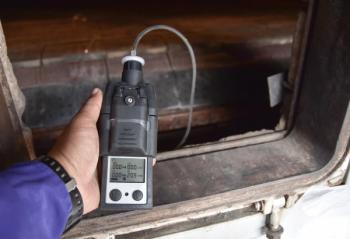
Advancements in Spectrally Resolved SERS Imaging
At SciX, Zac Schultz of The Ohio State University sat down with Spectroscopy to discuss his work characterizing molecular interactions with localization microscopy techniques, as well as give his thoughts about how spectrally resolved surface-enhanced Raman spectroscopy (SERS) imaging will impact in vitro cell imaging and other application areas.
The 2025 SciX team was led by Zac Schultz, a Professor and Vice Chair of Graduate Studies at The Ohio State University, who served as General Chair on the SciX team. As part of our coverage of the SciX Conference, Schultz sat down with Spectroscopy to discuss his work characterizing molecular interactions with localization microscopy techniques, as well as give his thoughts about how spectrally resolved surface-enhanced Raman spectroscopy (SERS) imaging will impact in vitro cell imaging and other application areas.
Schultz earned his BS in Chemistry from The Ohio State University in 2000 and his PhD in Chemistry from the University of Illinois at Urbana-Champaign in 2005, where he trained under Professor Andrew Gewirth. His doctoral research focused on using infrared-visible sum frequency generation spectroscopy to investigate electrochemical interfaces, which was a project that laid the foundation for his future work at the intersection of spectroscopy, materials science, and biochemistry (1).
Following his doctoral studies, Schultz was awarded a National Research Council Postdoctoral Fellowship at the National Institute of Standards and Technology (NIST), where he collaborated extensively with Ira Levin at the National Institutes of Health (NIH). (1) Their work combined vibrational spectroscopy and microscopy to explore biomembrane systems. This collaboration continued as he transitioned into a research fellow position at NIH, further refining his focus on spectroscopic methods to study biological materials (1).
In 2009, Schultz began his independent academic career as an assistant professor of chemistry and biochemistry at the University of Notre Dame. Over nearly a decade there, he built a strong research program that earned him tenure and promotion to associate professor in 2015. In 2018, he returned to The Ohio State University, where he continued expanding his research in molecular detection technologies. He was promoted to full professor in 2022 (1). His scientific achievements have been recognized with several honors, including selection as a Cottrell Scholar, election as a Fellow of the American Association for the Advancement of Science (AAAS), and receipt of the Clara Craver Award from the Coblentz Society for his contributions to vibrational spectroscopy (1,2).
In Schultz’s laboratory, his team focuses on developing new tools for identifying molecules critical to biomedical diagnostics and related fields. Much of Schultz’s work centers on vibrational spectroscopy, especially Raman spectroscopy, and the use of nanoparticles to amplify weak signals through surface-enhanced Raman scattering (SERS).
This interview clip is part of our interview with Schultz and his laboratory group. To stay up to date with the latest coverage of the 2025 SciX Conference, click
References
- The Ohio State University, Zachary Schultz. OSU.edu. Available at:
https://chemistry.osu.edu/people/schultz.133 (accessed 2025-10-08). - Wetzel, W. Investigating Protein Receptors and Other Biomolecules Using SERS and TERS. Spectroscopy 2025, 36 (S9A), 22–23. Available at:
https://www.spectroscopyonline.com/view/investigating-protein-receptors-and-other-biomolecules-using-sers-and-ters (accessed 2025-10-08).
Newsletter
Get essential updates on the latest spectroscopy technologies, regulatory standards, and best practices—subscribe today to Spectroscopy.





